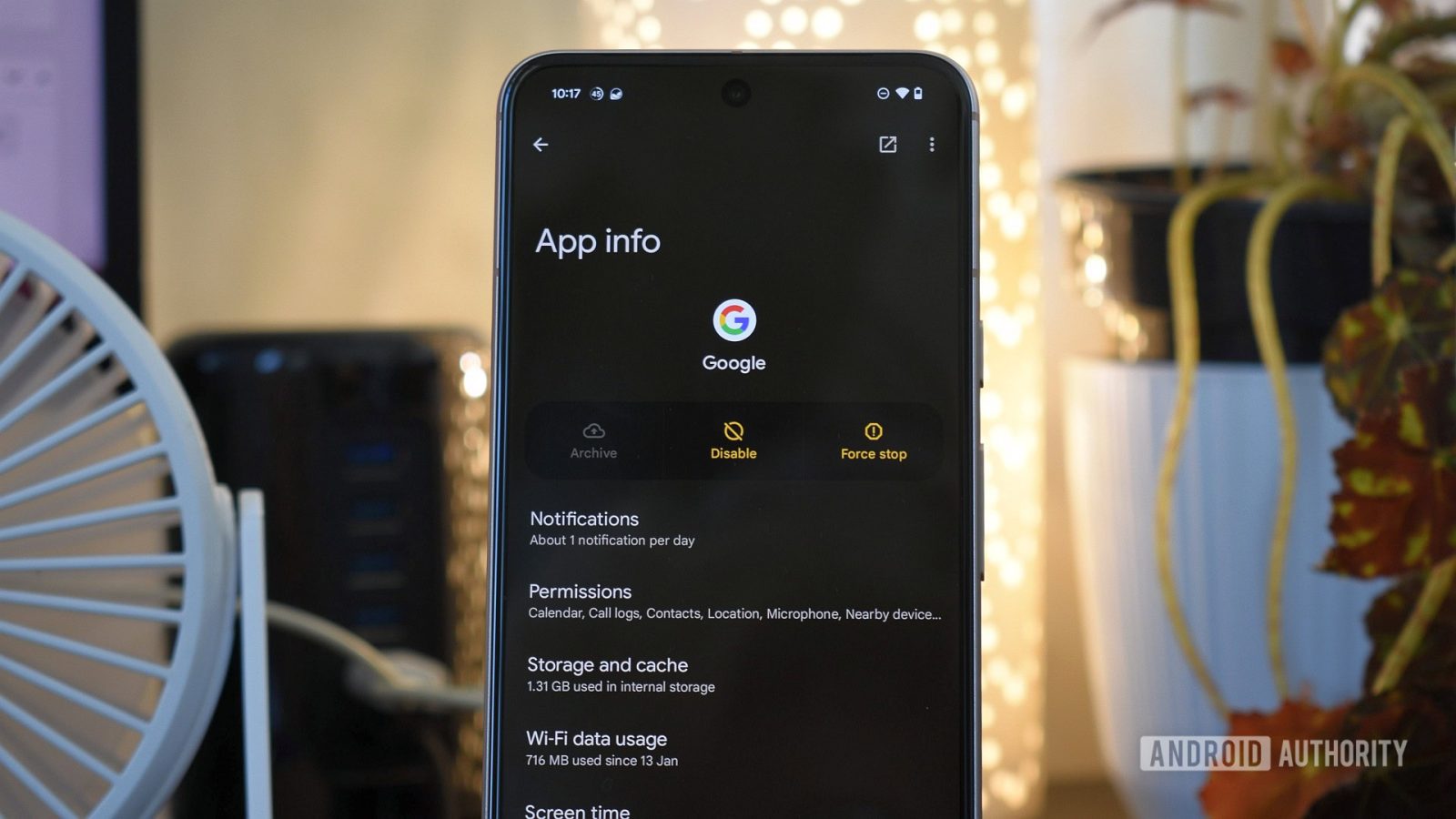Andy Walker / Android Authority
I spent several hours rummaging through the Google app for a recent opinion piece detailing its excellent Saved feature. However, I don’t use this app often, if ever. This got me thinking: why is the Google app still around, and why does Google insist on keeping it when a search widget from Chrome could essentially replace everything I use it for?
While I’m sure many users (including myself, initially) feel that it’s a vestigial piece of software from Android versions of old, it plays a far more critical role on your phone than its meek public-facing presence suggests. As infrequently as I — or you — actually tap that Google app icon, we all still use its hidden features many times a day.
How often do you use the Google app?
25 votes
Remind me again: What is the Google app?
Andy Walker / Android Authority
The Google app arrived more than 15 years ago and initially facilitated Google’s modest mobile search efforts on Android. The “googlequicksearchbox” part of its app name sheds light on these humble beginnings.
I quite enjoy Google’s vague description of the app on the Play Store, almost as if it’s also unsure why it exists. “The Google App offers more ways to search about the things that matter to you,” it states. Wow, Google, you’re really selling, and it’s important to me. And judging by the reviews, many users have no idea what the Google app is truly responsible for either. Maybe some of them know it’s responsible for the search widget on their homescreen, but maybe not. To be more realistic about its talents, though, the app offers so much more functionality than that. Today, it anchors several core Google features and services.
Beyond the Google app’s seemingly innocuous existence lie oodles of essential connections that, if yanked, would leave your phone crippled.
Beyond the Google app’s seemingly innocuous existence lie oodles of essential connections that, if yanked, would leave your Android phone crippled. Because my bar for entertainment is quite low, I disabled the Google app on a few devices to see exactly which services this would affect; it was remarkable how many it killed.
On my Pixel, the Discover feed is completely neutered without it, while Circle to Search is rendered mute. It at least toasts an “enable the Google app” alert on the Galaxy S24 FE. Several widgets are also rendered unavailable. Tapping on Google Lens’ icon throws up a “Google app is disabled” warning. Accessing Gemini or Assistant is entirely impossible, too, with the voice assistant joining Lens and Circle to Search’s chorus. Of course, disabling the Google app also severs access to several other features, including the Saved tab, Google’s various ad personalization options, and the song recognition feature. The Google app pulls far more strings behind the curtain than we are necessarily aware of, and its importance has only grown over the years.
It’s so important, but I seldom use it
Andy Walker / Android Authority
Perhaps it’s ironic that the Google app’s consumer utility has greatly diminished even if its background influence has strengthened. This statement is at least true for me. It’s among the app icons I rarely reach out for on my Android phone, and when I do access it, it’s because I’ve accidentally tapped the G icon or for research purposes. I’m sure that many other readers ignore its existence, too. I’d hazard that many Android users forgot that the Google app even exists.
So why doesn’t Google get rid of the Google app shortcut? Well, as I’ve explained, its existence is necessary. Although it appears redundant, it’s a surprisingly clever piece of software. See, while you can access Google Lens by tapping its app icon or trigger Gemini with a voice prompt, those are shortcuts to the Google app itself. That’s why these apps fail to start when you disable it. You may wonder why Google doesn’t simply spin off these features into their own apps, but there’s a practical reason behind this hub-and-spoke approach. As the functionality of multiple features is rooted in the Google app, the company can update, add, or patch a host of features simply by updating a single app that comes preinstalled on (almost) every Android phone and tablet.
The Google app may be redundant, but that’s by design.
If you’re a keen follower of our Authority Insights series, you’ll know the Google app’s deep-rooted functionality. Many prerelease and early feature discoveries stem from changes made within the Google app. As it’s essentially an uninstallable system app, users aren’t likely to remove it and accidentally disable half of their phone’s features.
Ryan Haines / Android Authority
Notably, the Google app still has a few unique features. While hosting the various collections of ice cream shops you’ve saved on Maps, the previously mentioned Saved functionality also houses movies and shows from Google TV, recipes, web pages saved from Chrome and the Google app, images, and general links. In reality, Saved should be its own standalone bookmarks tool, but we unfortunately don’t live in that world (yet). There are also newer items and experiments, including Daily Listen, which offers users a brief, curated audio news feed that’s pretty cool.
It’s possible to live without it, but I don’t think I’d want to
As much as I find it a waste of space on my app list, the Google app is essential if you value the features it powers. If you aren’t beholden to Google’s grasp, you can live without it. There are alternatives to Google Lens, Discover, Assistant/Gemini, and Saved, even if Google’s integration of these features within Android is unrivaled.
Until Google decides to sink its eponymous app beneath the skin of Android, like Play Services, I’ll have to hide it from view, skirt around it, or acknowledge its awkward but essential role on my Android phone.

Leave a Reply